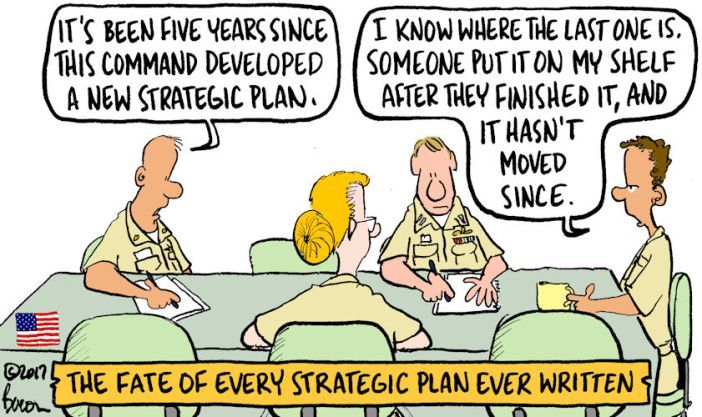
My vision for technical service has remained consistent: Ensuring Reliable and Economical Operation of Technical Devices – As Designed – in a Variety of Environments and Conditions.
Plan follows Strategy. Strategy follows Vision. A Plan is not a Strategy, and a Strategy is not a Vision.
This vision has been effective across different service styles, be it workshop-focused, field service, or leased products with inclusive support. I don’t explicitly mention a happy workplace, engaged staff, or high customer satisfaction because these outcomes naturally follow as the vision is pursued. Customers seek reliable and economical operation of their products, and achieving this requires a high-performing service team, which in turn leads to happier staff and satisfied customers. Happy customers, happy staff, successful business.
It doesn’t matter what your vision is, as long as it is something you genuinely believe in and something the team will also believe in. Of course, it needs to align with the interests of the overall business. This vision acts as a lighthouse beacon or guiding star for all strategic decisions.
The strategy outlines how you intend to achieve that vision, with the team, resources, and environment at your disposal or those you need to acquire. I prefer to work backwards from the vision – given this vision…
- What would achieving this vision look like in real business terms for this organisation?
- How far are we from that place right now?
- How do we get there from here, including the timeframe?
- And finally, what needs to change to achieve it?
Your plans are the real-time steps you take on that timeline to achieve strategic objectives. Plans need to be firm but flexible, which means having a team that can adapt when needed.
The famous quote, “No battle plan survives contact with the enemy,” continues with the important point, “what matters is how quickly the leader is able to adapt.” Adaptability comes through having good plans that allow your teams to be flexible in their execution. This might mean having Plan A, Plan B, Plan C, and so on.
If an activity in your plan does not move your organisation closer to the vision and is not part of your overall strategy, then it is more than likely a waste of resources.
Plans will be short-term, ranging from a single customer visit to a day, a week, or a month, but they can also extend to a year and multiple years. The further out in time you go, the less precise your plans will be, which is why it is crucial to have a strategy to ensure your plans are always aligned over time.
Whatever the timeframe, a plan must be reviewed honestly and dispassionately for its success or failure at the end of the defined period. Understanding why a plan succeeds or fails and being able to adjust plans or even your overall strategy accordingly for future activities will ensure the most rapid progress of your organisation towards your vision.
Don’t be afraid to abandon your strategy if it becomes clear it is going to fail. Terminate it early and decisively if necessary. But don’t leave your organisation without a strategy. Replace it. You know why you abandoned your former strategy, so you understand what needs to change in a replacement strategy.
Can an organisation succeed without a vision? Yes. But it may take longer and, more importantly, be far more costly. However, no organisation can survive long without a clear strategy; plans start becoming a variety box of solutions that often fail to address the real issues when there is no strategy to structure your planning from.

